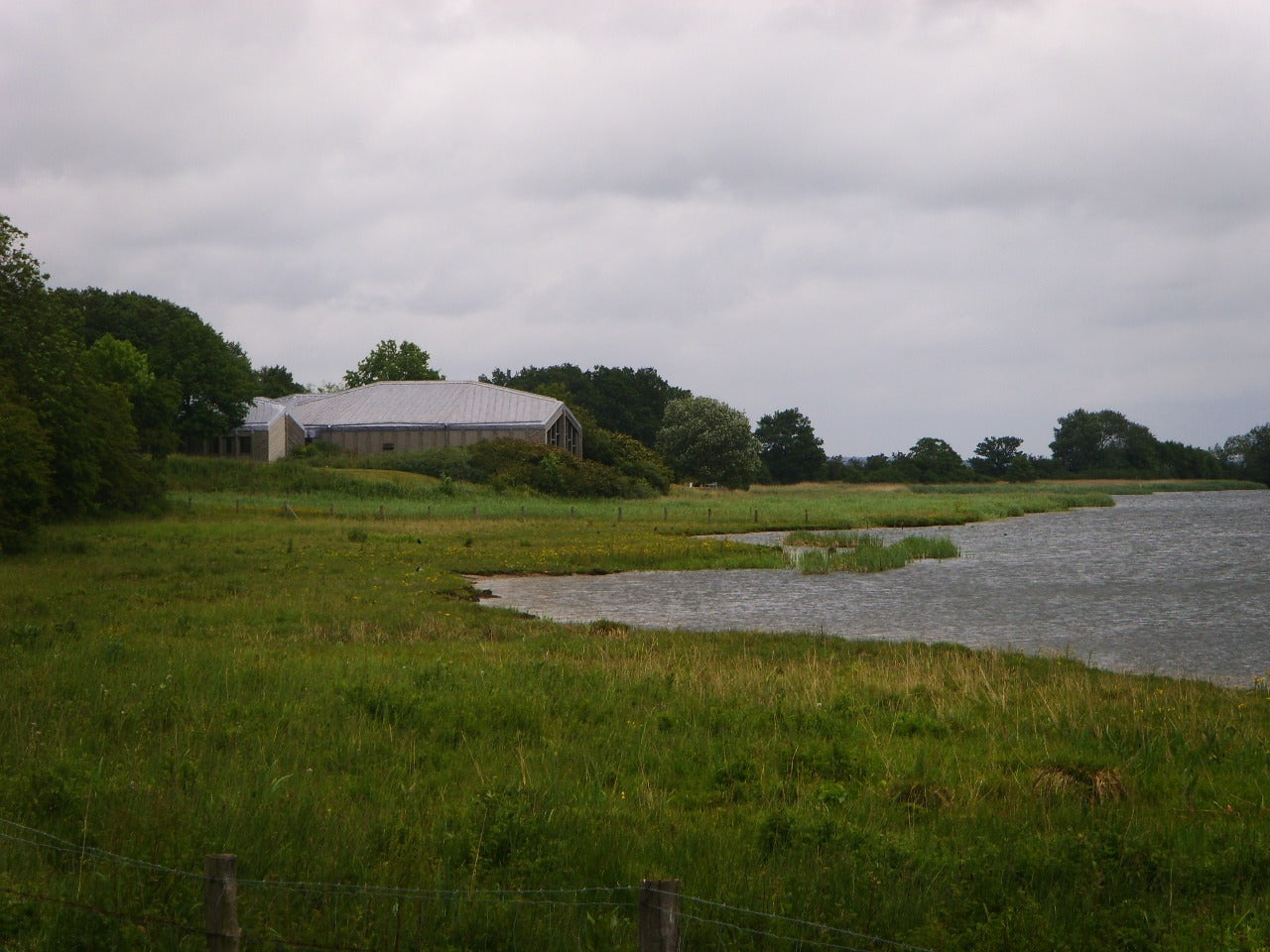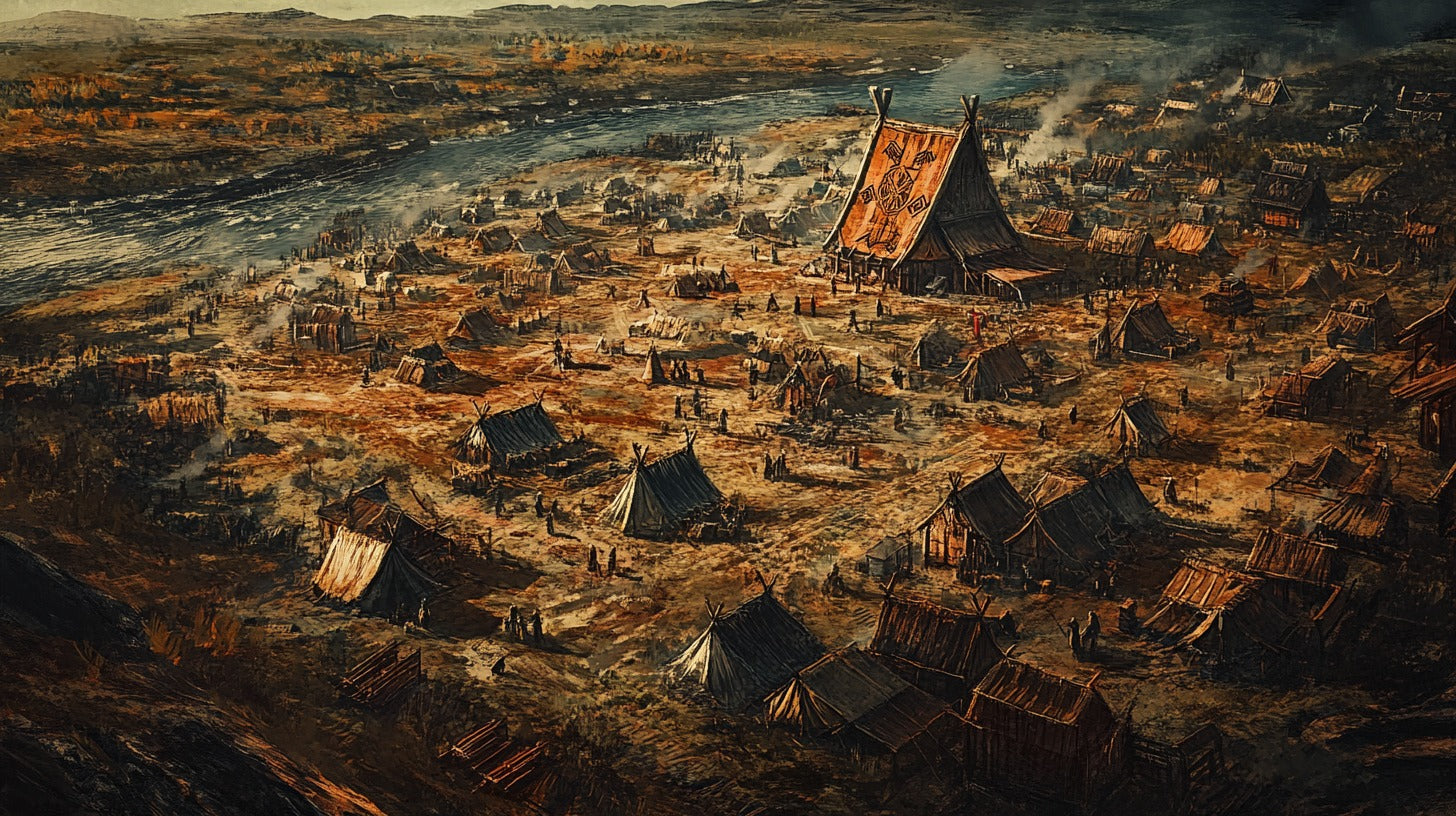
Hedeby: The Rise and Fall of a Viking Age Trading Metropolis
Nestled at the narrowest point of the Jutland Peninsula, Hedeby, also known as Haithabu in German, emerged as one of the most significant trading centers of the Viking Age. Its strategic location at the confluence of Danish and Frankish territories made it a crucial nexus for commerce and cultural exchange. Situated on the southern shore of the Schlei fjord, Hedeby commanded the vital overland trade route connecting the North Sea to the Baltic Sea, known as the Schleswig Isthmus.
The geographical advantages of Hedeby were manifold. Its position allowed merchants to circumvent the treacherous journey around the Skagen peninsula, the northernmost point of Denmark. Instead, goods could be transported overland for a short distance, dramatically reducing both travel time and risk. This convenience transformed Hedeby into a magnet for traders from across Northern Europe and beyond, catalyzing its rapid growth and prosperity.
Foundation and Early Development
While the precise date of Hedeby's establishment remains shrouded in historical uncertainty, archaeological evidence points to the late 8th century as the period when the settlement began to take shape. The Danish king Godfred is often credited with formally founding Hedeby around 808 CE, although smaller settlements likely predated his involvement. The Royal Frankish Annals document Godfred's role in relocating merchants from the nearby trading post of Reric to Hedeby, a move that significantly bolstered the town's commercial importance.
Under the aegis of the Danish monarchy, Hedeby experienced swift expansion. This growth was not merely organic but part of a calculated strategy to assert Danish control over the region's lucrative trade routes. As word of Hedeby's rising prominence spread, it began to attract a diverse array of settlers, including craftsmen, merchants, and adventurers from various parts of Scandinavia, the Slavic lands, and even more distant realms.
Hedeby's Golden Age
Sword from Hedeby Grave 62 (Photo: The Viking Age Compendium).
Trade and Commerce
The 9th and 10th centuries marked Hedeby's zenith, transforming it into a bustling metropolis by early medieval standards. With an estimated population ranging from 1,000 to 1,500 inhabitants, Hedeby pulsated with commercial activity. The town served as a critical link in an extensive trading network that stretched from the North Sea to the Baltic and beyond, attracting merchants from as far as the Byzantine Empire, the Abbasid Caliphate, and Central Asia.
Archaeological excavations have unearthed evidence of the diverse array of goods that flowed through Hedeby's markets. Baltic amber, highly prized for its beauty and supposed magical properties, was a common commodity. Scandinavian furs and pelts, valued for their warmth and luxury, were traded alongside Slavic honey and wax. Rhineland wines found eager consumers in Hedeby's taverns, while English woolen textiles clothed its cosmopolitan inhabitants. Arabic silver coins circulated widely, testament to the town's far-reaching commercial connections. Even exquisite Byzantine silks made their way to this northern emporium, adding a touch of eastern opulence to the Norse settlement.
Hedeby was not merely a passive recipient of foreign goods; it also gained renown for its local craft production. The town's artisans excelled in jewelry making, bone and antler working, and ship construction. Hedeby's jewelers crafted intricate pieces that melded traditional Norse designs with influences from the myriad cultures represented in the town's markets. The bone and antler workshops produced a wide range of items, from everyday combs to specialized tools and decorative objects. Perhaps most crucially, Hedeby's shipwrights stood at the forefront of Scandinavian nautical innovation, constructing the sleek, seaworthy vessels that enabled Viking exploration and trade.
Urban Layout and Architecture
Hedeby's urban planning reflected its status as a premier trading center. The settlement was encircled by a formidable semi-circular wall, part of the larger Danevirke fortification system that stretched approximately 30 kilometers across the Jutland Peninsula. Within these protective barriers, Hedeby was organized into distinct zones for residential, commercial, and industrial activities.

Reconstructed Viking Age homes in Hedeby (Photo: Hjart CC BY-SA 4.0)
The town featured an unusual grid-like street layout that facilitated the efficient movement of goods and people. Archaeological investigations have revealed several key structures that defined Hedeby's urban landscape. A central marketplace served as the heart of commercial activity. Wooden wharves lined the harbor, accommodating the constant flow of ships laden with goods from distant lands. Scattered throughout the town were workshops dedicated to various crafts, their locations carefully chosen to optimize production and trade.
Most buildings in Hedeby were constructed of wood, with some boasting stone foundations. The typical dwelling was a long, narrow structure with a thatched roof, designed to withstand the harsh northern climate. Despite its relatively small size, Hedeby boasted advanced infrastructure for its time, including a network of wells to provide fresh water, drainage systems to manage waste, and wooden plank walkways to ease movement through the often muddy streets.
Social Structure and Daily Life
The social fabric of Hedeby was as diverse as the goods in its marketplaces. The town's population reflected its status as an international trading hub, with a complex social hierarchy. At the apex were wealthy merchants and master craftsmen, whose economic clout translated into social and political influence. Below them were various strata of freemen, including lesser traders, artisans, and laborers. At the bottom of the social ladder were slaves, many of whom had been captured during Viking raids and brought to Hedeby to serve or be sold.
Daily life in Hedeby revolved around the rhythms of trade and craft production. The town's markets buzzed with activity from dawn to dusk, filled with the clamor of merchants haggling over prices and the chatter of a dozen different languages. In the craft quarters, artisans labored over their creations, producing goods for both local use and export. The harbor area was particularly lively, with ships constantly arriving and departing, their holds filled with exotic wares and their crews bringing tales from distant shores.
Religion played a significant role in the lives of Hedeby's inhabitants. Initially, the population was predominantly pagan, adhering to Norse religious practices. However, as Christianity began to spread through Scandinavia, Hedeby witnessed a gradual shift in its spiritual landscape. The construction of the town's first church in the early 11th century marked a significant cultural transformation, symbolizing the growing influence of Christian beliefs and practices in this once firmly pagan stronghold.
Decline and Fall
Shield guard found in Hedeby (Photo: Vikingage.org)
Viking Raids and Political Instability
Despite its prosperity, Hedeby was not immune to the political turbulence that characterized the Viking Age. The town suffered several devastating attacks in the 10th and 11th centuries, each leaving its mark on Hedeby's fortunes. In 934, the Swedish king Olof stormed and pillaged the settlement, a blow from which it eventually recovered. However, this attack foreshadowed the vulnerability of even the most well-defended Viking Age towns to determined assaults.
The political landscape of Scandinavia was undergoing significant changes during this period, with power increasingly consolidating under stronger monarchies. This process often involved violent conflict, and Hedeby found itself caught in the crossfire of competing Danish and German interests. The town changed hands several times, its control shifting between rival powers. This political instability undermined Hedeby's position as a secure trading hub, gradually eroding the foundations of its prosperity.
The Final Destruction
The death knell for Hedeby came in 1050 when the Norwegian king Harald Hardrada launched a devastating attack on the town. According to the Norse sagas, Harald's forces razed Hedeby to the ground, leaving it a smoldering ruin. Archaeological evidence corroborates these historical accounts, revealing a major fire event that coincides with the time of Harald's attack. This destruction proved to be the final blow from which Hedeby would not recover.
In the aftermath of this catastrophe, Hedeby was largely abandoned. The shifting political landscape, coupled with changes in trade routes and the rise of other urban centers, meant that the town never regained its former prominence. Many of its inhabitants likely relocated to the nearby settlement of Schleswig, which grew in importance during the following centuries, effectively inheriting Hedeby's mantle as the region's primary trading center.
Archaeological Discoveries and Legacy

Danish Viking swords discovered in Hedeby, now located in the Hedeby Museum (Photo: Rwhgould CC BY-NC-SA 2.0)
Major Excavations
The ruins of Hedeby lay largely forgotten for centuries, slowly fading from memory as the land reclaimed the once-thriving port. It wasn't until the late 19th century that the site began to attract scholarly attention. The first systematic excavations of Hedeby commenced in the early 20th century, led by German archaeologists eager to uncover the secrets of this important Viking Age settlement.
Thor's hammer pendant from Hedeby, with a near exact design to the Mjolnir amulet found in Rømersdal (Photo: Vikingage.org).
These initial excavations revealed the extent and complexity of Hedeby's urban layout, unearthing evidence of its defensive walls, street grid, and harbor facilities. Subsequent archaeological campaigns in the latter half of the 20th century employed increasingly sophisticated techniques, providing ever more detailed insights into the town's structure and daily life. Underwater archaeology in the Schlei fjord has yielded valuable information about Hedeby's maritime activities, including the discovery of well-preserved ship remains.
Perhaps the most significant find came in 1979 with the unearthing of a Viking ship burial within the town's boundaries. This discovery not only provided invaluable information about Viking shipbuilding techniques but also offered a poignant glimpse into the burial practices and beliefs of Hedeby's inhabitants.
Hedeby Museum
Today, the legacy of Hedeby lives on through the Hedeby Museum, located near the archaeological site. Established in 1985, the museum houses an extensive collection of artifacts recovered from the excavations, offering visitors a tangible connection to this long-lost Viking world. The museum's exhibits showcase everything from everyday household items to luxury goods imported from distant lands, painting a vivid picture of life in this medieval trading metropolis.
Adjacent to the museum, several reconstructed Viking Age buildings stand on the site of the original settlement. These reconstructions, based on archaeological evidence, provide visitors with an immersive experience of life in Hedeby. A reconstructed section of the town wall and one of the town gates further help to bring the past to life, allowing modern visitors to walk in the footsteps of Viking Age traders and settlers.
Conclusion
The rise and fall of Hedeby encapsulates the dynamic and often tumultuous nature of the Viking Age. For nearly three centuries, this settlement stood at the crossroads of cultures, facilitating trade and exchange between the Norse world and the wider European and Middle Eastern spheres. Its story is one of remarkable success, as a small Danish outpost grew to become one of the most important commercial centers in Northern Europe.
Yet Hedeby's history also serves as a reminder of the fragility of even the most prosperous settlements in an age of political upheaval and frequent conflict. The town's ultimate destruction and abandonment underscore the challenges faced by early medieval urban centers in maintaining their prominence amid shifting political and economic landscapes.
Today, Hedeby's legacy lives on through the archaeological remains and the museum that bears its name. These serve not only as a window into the Viking past but also as a testament to the enduring human drive for commerce, cultural exchange, and urban development. The story of Hedeby continues to fascinate historians, archaeologists, and the public alike, offering valuable insights into a pivotal period of European history and the complex networks that shaped the medieval world.
Frequently Asked Questions
- When was Hedeby founded?
Hedeby's exact founding date is uncertain, but archaeological evidence suggests it began developing in the late 8th century. Danish King Godfred is credited with formally establishing the town around 808 CE.
- What made Hedeby such an important trading centre?
Hedeby's strategic location at the narrowest point of the Jutland Peninsula, controlling the overland route between the North Sea and Baltic Sea, made it a crucial hub for international trade during the Viking Age.
- What kinds of goods were traded in Hedeby?
A wide variety of goods passed through Hedeby, including Baltic amber, Scandinavian furs, Slavic honey and wax, Rhineland wines, English textiles, Arabic silver coins, and Byzantine silks, among others.
- How was Hedeby eventually destroyed?
Hedeby was ultimately destroyed in 1050 by the forces of Norwegian King Harald Hardrada, who, according to historical accounts, burned the town to the ground.
- What can visitors see at the Hedeby site today?
Today, visitors can explore the Hedeby Museum, which houses artifacts from the excavations, and view reconstructed Viking Age buildings, a section of the town wall, and one of the town gates on the site of the original settlement.
References
"Hedeby 35" by Västgöten is licensed under CC BY-SA 3.0.
"Weaponry in Hedeby Viking Museum" by rwhgould is licensed under CC BY-NC-SA 2.0.
"Ny Hedeby 2023 6" by Hjart is licensed under CC BY-SA 4.0.











